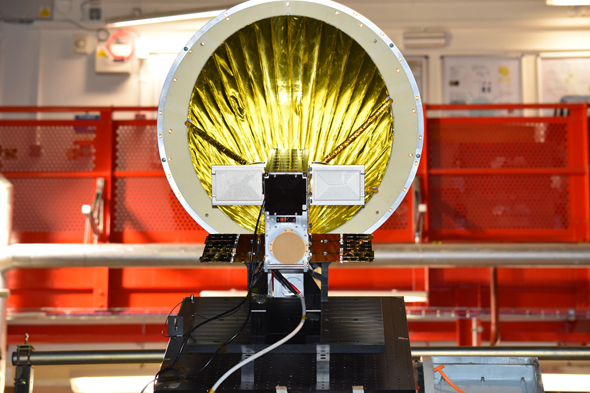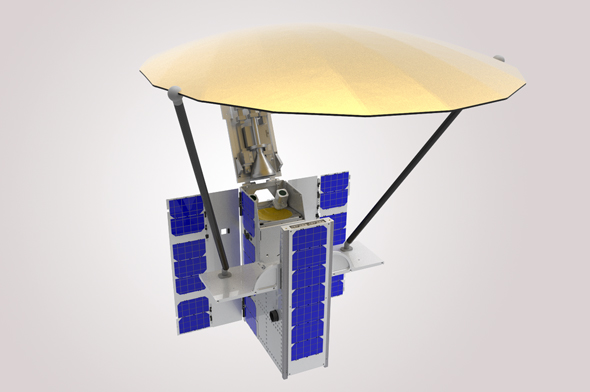Interview
Startup’s pop-up antennas slash price of satellite communications
NSLComm engineers pop-up dishes, antennas and are looking to partner - not compete with major communications companies to help supply broadband, agritech IoT services, at a fraction of the cost
“Most people rely on cellular phones as a means of communication, but cellular phones are not the only option. We can communicate via satellites, they are ubiquitous - they offer worldwide coverage, help people communicate everywhere and anywhere without torrential infrastructure which can cause several problems, such as having to fit fiber optic cables under oceans, or the need to rely on cellular towers,” Itzhaki explained. “While those options are cost-effective, it would be much more elegant to communicate directly through space, without putting any fibers in the ground. I believe that everyone on Earth has the right to be connected to broadband, and we hope to facilitate that with our technology.”
 NSLComm CEO Raz Itzhaki
NSLComm CEO Raz Itzhaki The cost of communication satellites is quite high since they demand large expensive communication dishes in space, and that is the main factor driving up costs today, he explained. NSLComm believes that can all be overcome by minimizing satellites weight and volume, achieving higher output by flying them in low-Earth orbit, utilizing expandable antennas that enable more impressive bandwidth capabilities, and more.
How can NSLComm’s satellites offer superior bandwidth capability?
“They aren’t reliant on cellular towers, and in that way offer superior performance. Our nanosatellites weigh around 8 kg (17 pounds) and can transmit data up to 2 gigabytes per second, which normally would require a satellite the size of a washing machine, that weighs around 100 kg (220 pounds),” he said. By being ten times lighter and smaller, the cost of this type of communication would then be equivalent to that of fiber optics, or other competing technologies, and could offer a competitive alternative in both populated and remote areas.
NSLComm’s satellite antennas pop-up in space, and its FlexoSub patent is a “smart” subreflector, which allows the antenna to compensate for any imperfections in the reflector dish’s shape, and alter ground patterns while it hovers. “It allows us to control the satellite’s footprint, and can focus on a certain area or send a larger beam to provide communication over a much wider area,” he said.
“This maintains robust communication power, and allows them to have the same ability as larger dishes,” he said, adding that satellites are typically deployed one at a time due to their large weight and size, and their launch is an additional complicating factor. “About 90% of the satellite’s volume must hold the dish during the launch, and releases into space slowly, because it’s a very harsh environment. Imagine if you didn't have to launch a dish to space, but instead could fold up the dish into a satellite so it takes up very little volume, and only when it reaches space it unfolds. That’s what our technology does, and enables us to use smaller-sized satellites, cutting down on cost,” he said.
 NSLComm's nanosatellites' dishes retain the ability to pop up in space cutting down on size and cost
NSLComm's nanosatellites' dishes retain the ability to pop up in space cutting down on size and cost NSLComm’s nanosatellites are somewhat of an anomaly - they are small-sized with large dishes. This, in turn, allows them to be launched as an entire satellite constellation, instead of a single one. These versions are cheaper to build, since they can yield a higher profit margin, by some 90%, and become affordable enough to be competitive against fiber or cell communications options.
Satellites that fly in low-orbit can easily fly over remote areas as well, or those without cellular infrastructure, provide communication, and supply solutions from agritech to IoT to broadband services. NSLComm’s satellites have minimal latency, meaning their computerized networks are optimized to process a very high volume of data with minimal delay, and they can offer higher bandwidth over traditional geosynchronous satellites (GEO) that fly along Earth’s orbit. The company’s LEO constellation flies quite close above the Earth’s atmosphere - some 400 km to 700 km (250 miles to 450 miles) above the globe.
 The company's satellites fly in lower-earth orbit which allows for more robust high-speed broadband connectivity (illustration). Photo: Shutterstock
The company's satellites fly in lower-earth orbit which allows for more robust high-speed broadband connectivity (illustration). Photo: Shutterstock How does NSLComm’s technology stand out from other Israeli space tech companies?
“We belong strictly to the NewSpace arena, and I think that Israel has phenomenal experience and success stories in space,” he elaborated. Itzhaki has extensive involvement with the nanosatellite sector, from initiating and leading the nano-satellite department at Israel Aerospace Industries (IAI), teaching courses on space engineering in Israel and the U.S., to founding the Israeli Nanosatellite Association (INSA). “I believe that what limits the Israeli industry today is the high cost, and NSLComm has the ability to bring powerful missions to space at a lower cost while benefiting from the enormous offerings of the NewSpace industry. We’re more agile than other companies,” he added.
An abundance of advanced applications
The nanosatellites deploy large antennas in space, which enable sensitive measurements of terrestrial devices, such as those that use the Internet of Things (IoT) technology and can operate in space. “About 90% of agricultural areas are not covered by any means of communication, and we can cross over those areas with our satellites from space to directly liaise with minute sensors.”
In one initiative, the startup partnered with the Ramat Hanegev Regional Council and Yuma, Arizona to oversee and provide communication for agricultural areas in the desert. NSLComm has also partnered with Denver-based York Systems to reach more customers who aim to send payloads aboard their nanosatellites. Its Colorado manufacturing facility can offer Israeli services to both government and commercial entities.
 NSLComm's satellites are shoebox-sized yet provide the same capabilities as larger versions
NSLComm's satellites are shoebox-sized yet provide the same capabilities as larger versions Partnering, not competing
NSLComm doesn’t aim to compete with SpaceX’s Starlink program of offering broadband services to the globe, but rather it hopes to offer numerous payload capabilities to a variety of companies. “Currently, there are 120 satellite constellations being built by different companies, for IoT, imaging, communications, or weather tracking purposes. We look at all of these companies as potential partners, and not competitors. We’ll supply the technology, while companies can benefit from the lower costs of launch and deployment. “Our business model focuses on partnering with other entities,” he explained.
Future financial goals
The company raised $3 million in a Series A round during the first quarter of 2016, and $9 million in a Series B round between 2018 and 2019 from Jerusalem Venture Partners, Liberty Media Technology Ventures, OurCrowd, El Al, and others. In addition, NSLComm also receives support from the Israel Space Agency and the Israel Innovation Authority. While the company has yet to go public, Itzhaki thinks that the space tech market is especially promising for new young startups.
“Today more than ever, investors appreciate the opportunities presented in space. But the current emphasis is on how to pack more and more intelligence and value into smaller packages, as we begin the next chapter of our space odyssey. NSLComm’s remarkable pop-up antenna technology provides the highest possible bandwidth and communication capability in the smallest package, which is just what today’s guardians of the galaxy are looking for,” OurCrowd CEO Jon Medved commented.
That said, being an early stage startup working in the deep tech sector is no simple feat, and it is extremely difficult to create a proof of concept. As for the future, Itzhaki believes that NSLComm will reach far. “I envision that our company will take part in a few satellite constellations, and be part of helping others by providing high speed communications. In parallel, I also hope to create robust nanosatellite manufacturing capabilities in Israel. We build our nanosatellites here, but Israel can play a more significant role and I want NSLComm being a part of bringing mass production to Israel."



